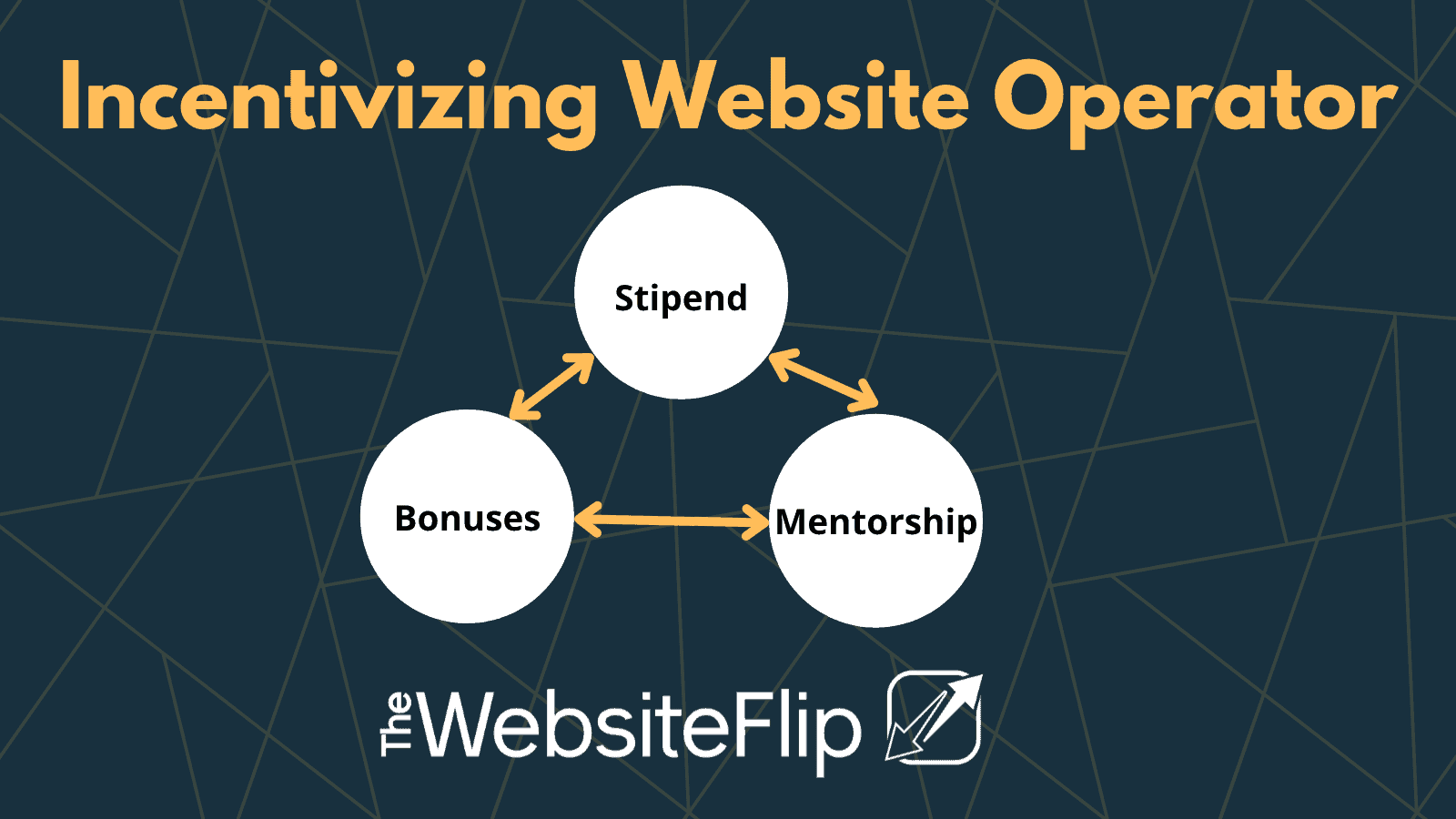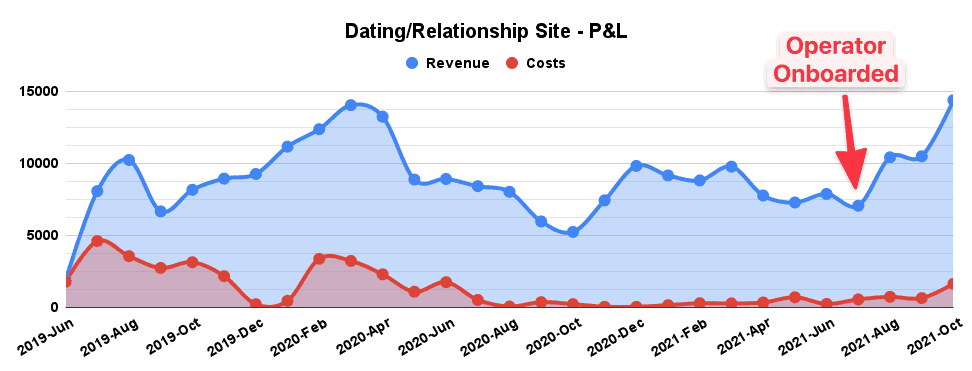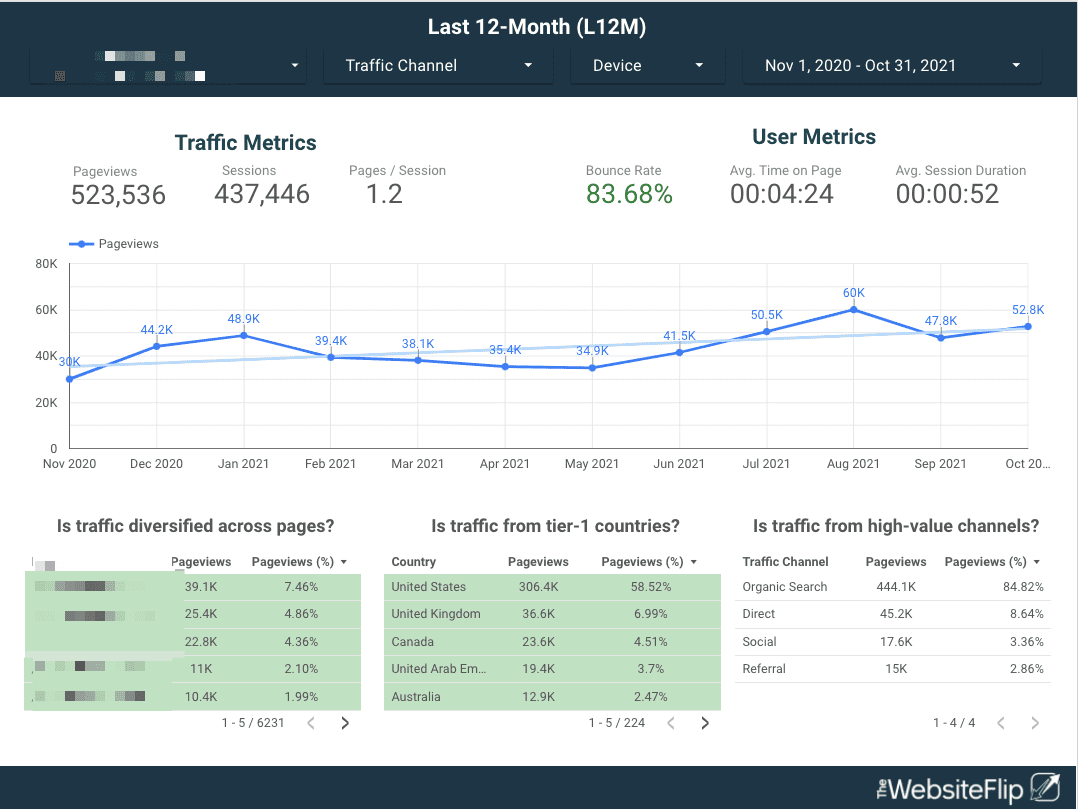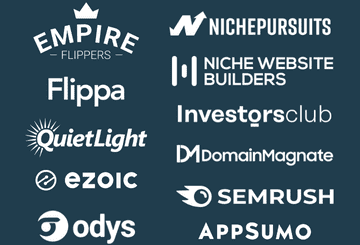Hiring a website operator can be scary for many. You are essentially handing over the “keys” to your profitable niche site.
For one such site in my portfolio, we hired a website operator to take over full management in July 2021. The operator increased revenues to $14,440 in October 2021 from $7,045 in July!
This write-up reviews the last 3-months of this website. This is what’s covered:
- Updates on website operator’s performance
- 3 major tasks that led to the growth
- Ways we incentivize the operator
- Website operator job template [Club Members only]
Let’s get into it!
Website Backstory and Summary
This site was purchased on Flippa in April 2019 for $36,000. In January 2020 (in 10 months), I sold 75% equity to another investor. The valuation at the time was $194,000 to which I sold 75%.
I still retained 25% ownership. From January 2020 to June 2021, I managed the site as the operator for a monthly stipend. However, it was clear that I was focused on various other projects and thus my investor and I went on the lookout for a website operator.
Here is the high-level summary of the website:
- Branded domain (with branded searches) since October 2006
- Ahrefs DR 43
- 873 Referring domains backlinks from NY Times, CNN, Washington Post, Wikipedia, HuffPost, NBC News, CBC, AOL, AARP, US Military (.gov), US Embassy (.gov), Yahoo News, Trip Advisor, Business Insider, and hundreds of others
- Ranking for 33,600 keywords with ~50,000 page views
- Diversified traffic to all pages; the highest page brings in 7.5% of total traffic!
- 848,129 published words across 533 articles
- Customized affiliate deals already in place
- New website design on a fast tech stack (GeneratePress, WP Rocket, etc)
- Passes Google Core Web Vitals
- The website is optimized for high clickthrough rates with popups, call-to-action boxes, product boxes, etc.
We hired an operator in July 2021. Find out why we did below.
Why Hire an Operator?
For this site, the main drivers were:
- We were too busy with our other sites
- We got bored of the topic (“shiny object syndrome” is real)
- We had tunnel vision and could not (or did not have the motivation) to spot more easy wins
Being experienced, I know that a website needs maintenance. The worst thing we could do is let the site sit and “decay” over time. It made sense to hire someone to work on the site regularly.
With the motivation out of the way, let’s discuss the performance metrics of the site he’s managing.
Operator Increased Profits by $6,244(!)
From January 2021 to June 2021, the site was stagnant at roughly $8,500 average revenue per month. The operator we hired in July 2021 increased the site’s revenues by more than $6,000 peaking at $14,440 in October 2021.
He was brought on to manage the site because we were neglecting it and needed a fresh set of eyes to come in and try to improve earnings. He did exactly that.
Revenue Trendline
The revenue graph is shown below:
The revenue growth trajectory was as follows:
- Starting Month (July): $7,045
- Month 1 (August): $10.408
- Month 2 (September): $10,479
- Month 3 (October): $14,440
This growth was not due to seasonality. Here are 3 subsequent years’ earnings for October:
- October 2019: $8,927
- October 2020: $5,221
- October 2021: $14,440
Traffic Increased Only 5%; Revenue Increased 96%
More traffic should not always be the goal. Your goal should be to maximize the revenue of existing traffic at all times. That’s exactly what the operator did.
Here is the traffic trendline below:
In July 2021, the site received 50,500 pageviews. In October it obtained 52,800 pageviews. It wasn’t the rise in traffic that cause the significant boost in revenue from $7,045 in July to $14,440 in October.
It was CRO.
3 Tasks Leading To Additional $6,244/mo Profit
The tasks can be organized into conversion rate optimization (CRO), on-page SEO, and new content.
While there are various small tasks within these, that’s all that it takes when trying to grow a site with existing traffic and monetization streams.
Let’s discuss each of them.
1. CRO Audit: Improve CTAs and Call Outs
This site has already figured out the highest monetization opportunities. Now it’s just about tweaking and adding CTA elements within a page, and switching out offers on specific pages.
The operator did the following tasks:
- Added CTA buttons to affiliate offers on newly ranked and old pages that received traffic but were unoptimized
- Changes affiliate offers in comparison tables that weren’t converting well
- Adding affiliate comparison tables to pages getting traffic
The site has over 684 articles. Many of them get small amounts of traffic. The operator went through Google Analytics spotting any pages that get a small amount of traffic (over 30 pageviews over the last 30 days) and optimizing those for CRO.
This led to immense growth in revenues since the revenue payouts in this niche range from $60 to $160. A small amount of traffic can lead to high revenues.
2. On-Page SEO Improvements
With 684 articles on the site, many were never optimized for SEO. In the growth phase of a website, the goal is to publish as much content as possible and optimize full later. That’s exactly what I did when operating the site.
I published well over 200 articles and optimized less than 10%. Note that basic optimization was done (e.g., adding keywords to headers) but the detail process using Frase, Marketmuse, or SurferSEO was not done by me.
The operator did the following:
- Performed a content audit to remove pages that had no purpose (no backlinks, no traffic)
- Identified pages that had keywords ranking in positions 5 to 20. Optimized these pages for these particular keywords, and added a few internal links to these pages.
- Used the category pages to pass link juice to some pages that needed a bit of push
- Replaced links on the sidebar with articles that need a boost to rank higher (e.g., buying guides)
3. Total of 12 New Articles Published
The operator did not publish a significant amount of new content. This was because of the following reasons:
- In the growth phase, while I owned the site, I targetted the low competition keywords in this niche. Thus, none were left for him
- The goal was to grow earnings with the published content for a few months
How We Incentivized The Website Operator

If the incentives given to the operator do not make sense initially or down the line, it will cause issues. The last thing you want is to hire someone who works a few months and then leaves because it’s not worth it for them.
Here is how we provided incentives to the operator.
1. Monthly Stipend
You have to pay a monthly fee.
If you want to operator to work on your site (and not a portfolio of others), you have to pay a reasonable wage for their time. Now you can reduce the monthly stipend if you are providing other incentives (e.g., bonus, equity).
2. Bonus Incentives
Bonus incentives help motivate them to grow the site. Otherwise, just giving a monthly stipend will motivate them to keep the site at the same level (i.e., not putting in extra effort to grow it).
We offered the operator a $1,000 one-time bonus when the site hit $12,000 in revenue.
Once that was hit, we adjusted the target again to $16,000 where he would get another $1,000 bonus.
3. Be a Mentor
Be available to give advice and make that clear to the operator. They want to learn on the job and want to have a “mentor” to ask questions about their sites, situations, etc.
Actionable Takeaways
In short, hiring a website operator can allow you to focus on other projects, get a fresh set of eyes (tunnel vision is real), and hopefully, generate higher revenue out of the same site.
Here are takeaways you can apply today to your portfolio:
- Review each site and determine the ones you are truly passionate about working on, and the ones that you are neglecting. Either sell the neglected ones or try to outsource fully to an operator or a team of VAs.
- Reach out to your VAs to see if any of them have niche site experience. Many of them do and may want a more full-time position managing site(s).
It’s in your best interest (financially) to hire a semi-expert website operator. The ones that are true experts will charge a significantly higher per month stipend, and some want equity.
Try to see if any of your VAs have the expertise and train them up. They will thank you for it and you will save time/money down the road.





